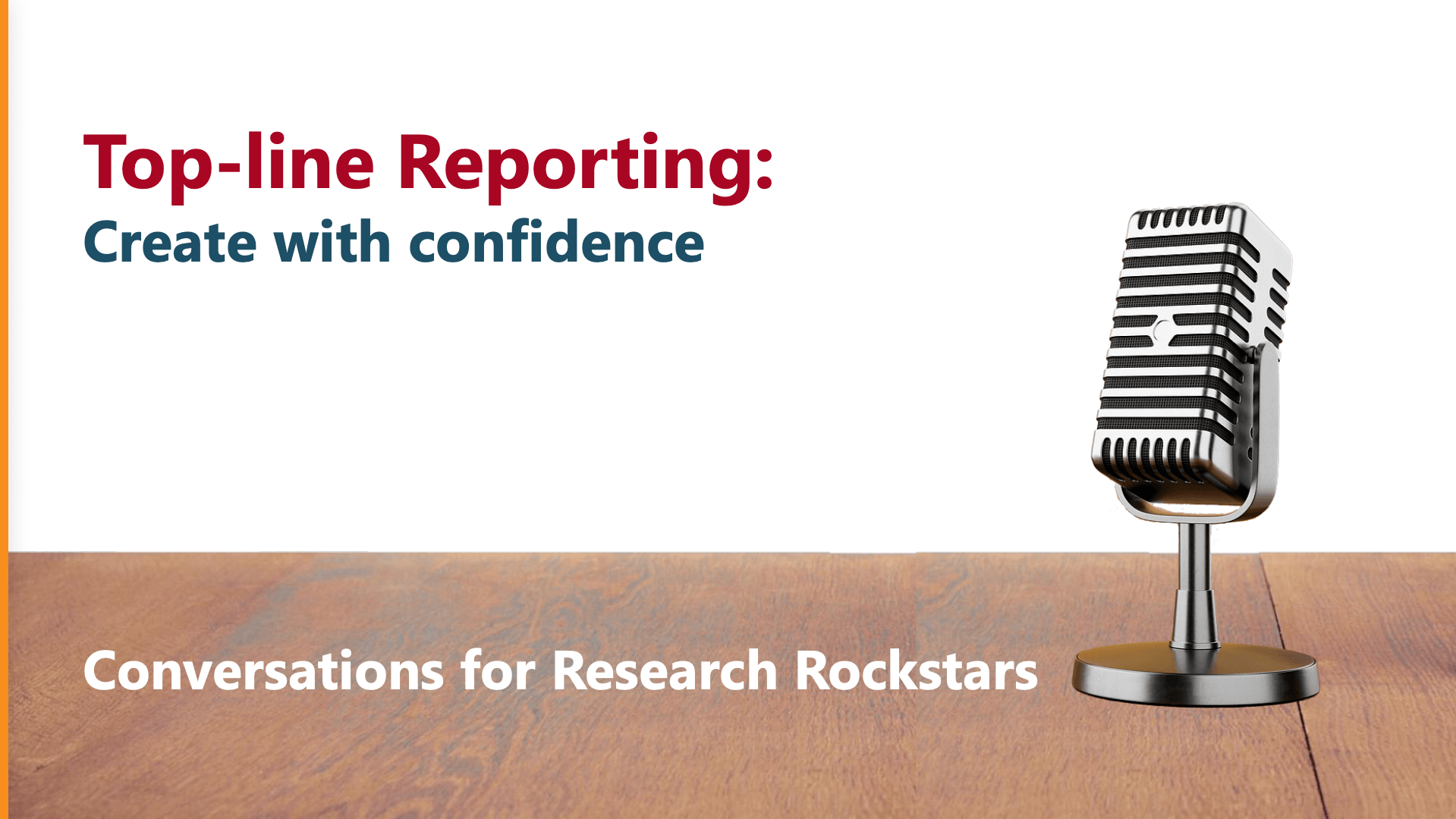In the realm of qualitative market research, the top-line report is a common deliverable. Whether it be for C-suite executives or cross-functional teams, stakeholders always appreciate a concise summary of the project’s keen insights. But here’s the catch: the term “top-line” is often used inconsistently; to some, it is a 2-3 page summary. To others, it is a short form report, sometimes of 20+ pages! And others fall in between. Unfortunately, this inconsistency can leave clients less satisfied when their expectations, driven by past experiences with top-lines, aren’t met.
Fear not, dear Research Rockstar—Instructor Kathryn Korostoff breaks down the proper definition of “top-line reporting” in our most recent Conversations for Research Rockstars podcast episode.
The Misused Moniker: Decoding “Top-line”
Top-lines are intended to be a concise way to deliver the most important findings from our research and are often delivered quickly (sometimes within just two business days after completing data collection!). Many throw the term around carelessly, blurring its true meaning. A true top-line report is a summary; it’s the essence of our findings, distilled into a concise format.
The top-line is sometimes a preliminary deliverable and may precede a “full report” of deeper analysis that will take longer. For projects with very narrow objectives, the top-line may be the only deliverable. However, deeper research projects exploring attitudes, drivers, emotions, etc., will typically include a more thorough analysis, and that takes time.
Top-line Top Tips
Many researchers struggle with distilling research results down to the most essential, and valuable, key findings. Truly, it’s easier to write a 30-page report than a 3-page top-line. In this 8-minute episode, Kathryn sheds light on some top-line top tips, sharing guidelines that will aid researchers in selecting, distilling, and presenting research gems.
Don’t have time to watch? Enjoy the breakdown below.
Top-lines typically follow the following style parameters:
- Generally open with brief statements of the researcher’s most important takeaways (don’t bury the lead)
- Typically organized by discussion guide section order, with bullets summarizing results from the most important questions
- LIGHT use of verbatims (if any)
- Often 2-5 pages in length (avoid longer than this—it will no longer be a top-line!)
- Factual summaries style, i.e., “Most respondents reported that…” or “Very few participants liked…”
Some less common but valuable components can include tallies on select items or statements about observer consensus.
Whether you’re a seasoned researcher or just beginning your journey, we hope these tips will help you craft top-line reports that ignite insights.
If this Conversations episode ignites your passion for exceptional qualitative reporting, the Research Rockstar course on Writing Qualitative Research Reports is your next stop on your market research journey. Please check out the course information page here to learn more about this course.












